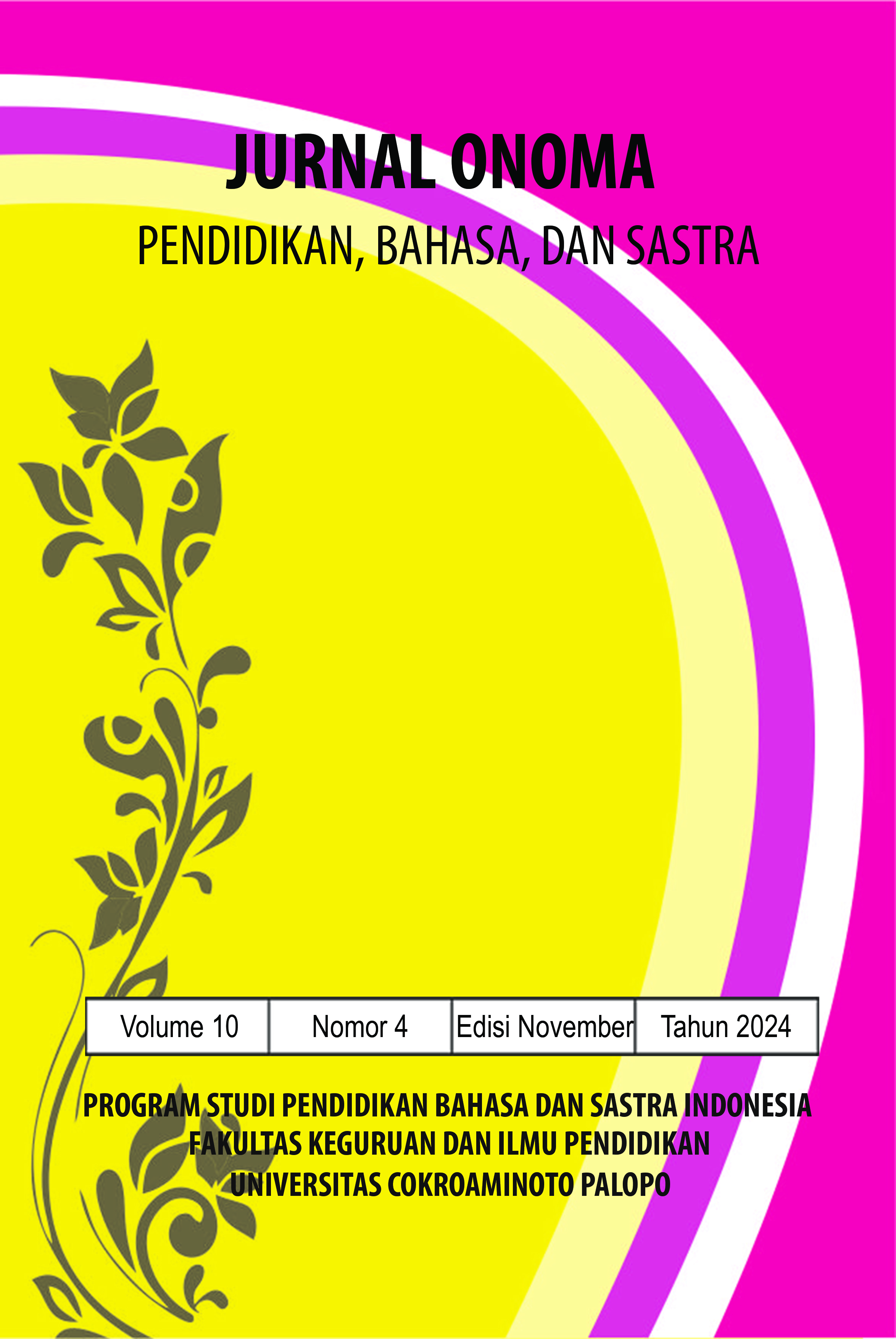Persuasive Strategies Used by Indonesian’s Presidential Candidate Ganjar Pranowo in His Speech
https://doi.org/10.30605/onoma.v10i4.4227
Keywords:
persuasive strategies, political campaign speech, Ganjar PranowoAbstract
The purpose of this study was to identify the kind of persuasion tactics Ganjar Pranowo employed in one of his political campaign speeches as well as his propensity to do so. This study employed Beebe & Beebe's persuasive strategies theory to examine the data. The data were then subjected to a descriptive-qualitative approach to analysis. Taking notes served as the study team's tool for discovering the most reliable information. The research questions of this study was to gain a deeper understanding of the many persuasive techniques and how they are typically applied in political campaign speeches. The research revealed that Ganjar Pranowo employed various persuasion techniques to gain the audience's or the public's support and buy into his notion. The study came to the conclusion that Ganjar Pranowo employed 14 of the 20 persuasive techniques which are using trustworthiness, giving evidence to tell a story that aid the audience in visualizing what he was describing, using language that elicits feelings, making the right appeals, and showing hope, pride, and courage.
Downloads
References
Beebe & Beebe. (2012). Public Speaking: An Audience-Centered Approach (8th ed.). Boston: Pearson Education.
Cooper, M. D., and William L. Nothstine, Power Persuasion: Moving an Ancient Art into the Media Age (Greenwood, IN: Educational Video Group, 1996), 48.
Holmes, J. 1996. “An Introduction to Sosiolinguistic.” LONGMAN. DOI: https://doi.org/10.1007/978-1-349-24979-4_1
Hunston, S. (2011). Corpus Approaches to Evaluation: Phraseology and Evaluative Language. New York: Routledge DOI: https://doi.org/10.4324/9780203841686
Lopez, A. (2000). Targeting Media. Sydney: Copyright Agency Limited. Lum, C. (2002). Scientific Thinking in Speech and Language Therapy. New Jersey: Lawrence Erlbaum Associates, Inc.
Macagno, F. & Walton, D. (2014). Emotive Language in Argumentation. New York: Cambridge University Press. DOI: https://doi.org/10.1017/CBO9781139565776
Miller, G. R. (2013). On Being Persuaded: Some Basic Distinctions. In J. P. Dillard & L. Shen (Eds.), The Sage Handbook of Persuasion: Developments in Theory and Practice (70–81). Retrieved from https://search.ebscohost.com/ DOI: https://doi.org/10.4135/9781452218410.n5
Stiff, J. B., and Paul A. Mongeau, Persuasive Communication, 2nd ed. (New York: Guilford Press, 2003), 105.
Pacho, Titus O. (2015). Exploring Participants’ Experiences Using Case Study. International Journal of Humanities and Social Science. Vol. 5, No. 4; April 2015. http://www.ijhssnet.com/journals/Vol_5_No_4_April_2015/5.pdf
Perloff, R. M. (2003). The Dynamics of Persuasion. Communication and Attitudes in the 21st Century. Mahwah, N.J.: Lawrence Erlbaum Associates.
Verderber, R. F., Sellnow, D. D., & Verderber, K. S. (2012). The Challenger of Effective Speaking (15th ed.).Boston, MS: Wedsworth.
SOLO, R., & TORAJA, M. T. (2023). Universitas Cokroaminoto Palopo, suparman@ uncp. ac. id. Jurnal Penelitian Pendidikan, 8(1).
Volek, B. (1987). Emotive Signs in Language and Semantic Functioning of Derived Nouns in Russian. Philadelphia: John Benjamins Publication Company. DOI: https://doi.org/10.1075/llsee.24
Downloads
Published
How to Cite
License
In submitting the manuscript to the journal, the authors certify that:
- They are authorized by their co-authors to enter into these arrangements.
- The work described has not been formally published before, except in the form of an abstract or as part of a published lecture, review, thesis, or overlay journal.
- That it is not under consideration for publication elsewhere,
- That its publication has been approved by all the author(s) and by the responsible authorities – tacitly or explicitly – of the institutes where the work has been carried out.
- They secure the right to reproduce any material that has already been published or copyrighted elsewhere.
- They agree to the following license and copyright agreement.
License and Copyright Agreement
Authors who publish with Onoma Journal: Education, Languages??, and Literature agree to the following terms:
- Authors retain copyright and grant the journal right of first publication with the work simultaneously licensed under Creative Commons Attribution License (CC BY 4.0) that allows others to share the work with an acknowledgment of the work's authorship and initial publication in this journal.
- Authors are able to enter into separate, additional contractual arrangements for the non-exclusive distribution of the journal's published version of the work (e.g., post it to an institutional repository or publish it in a book), with an acknowledgment of its initial publication in this journal.
- Authors are permitted and encouraged to post their work online (e.g., in institutional repositories or on their website) prior to and during the submission process, as it can lead to productive exchanges, as well as earlier and greater citation of published work.

















